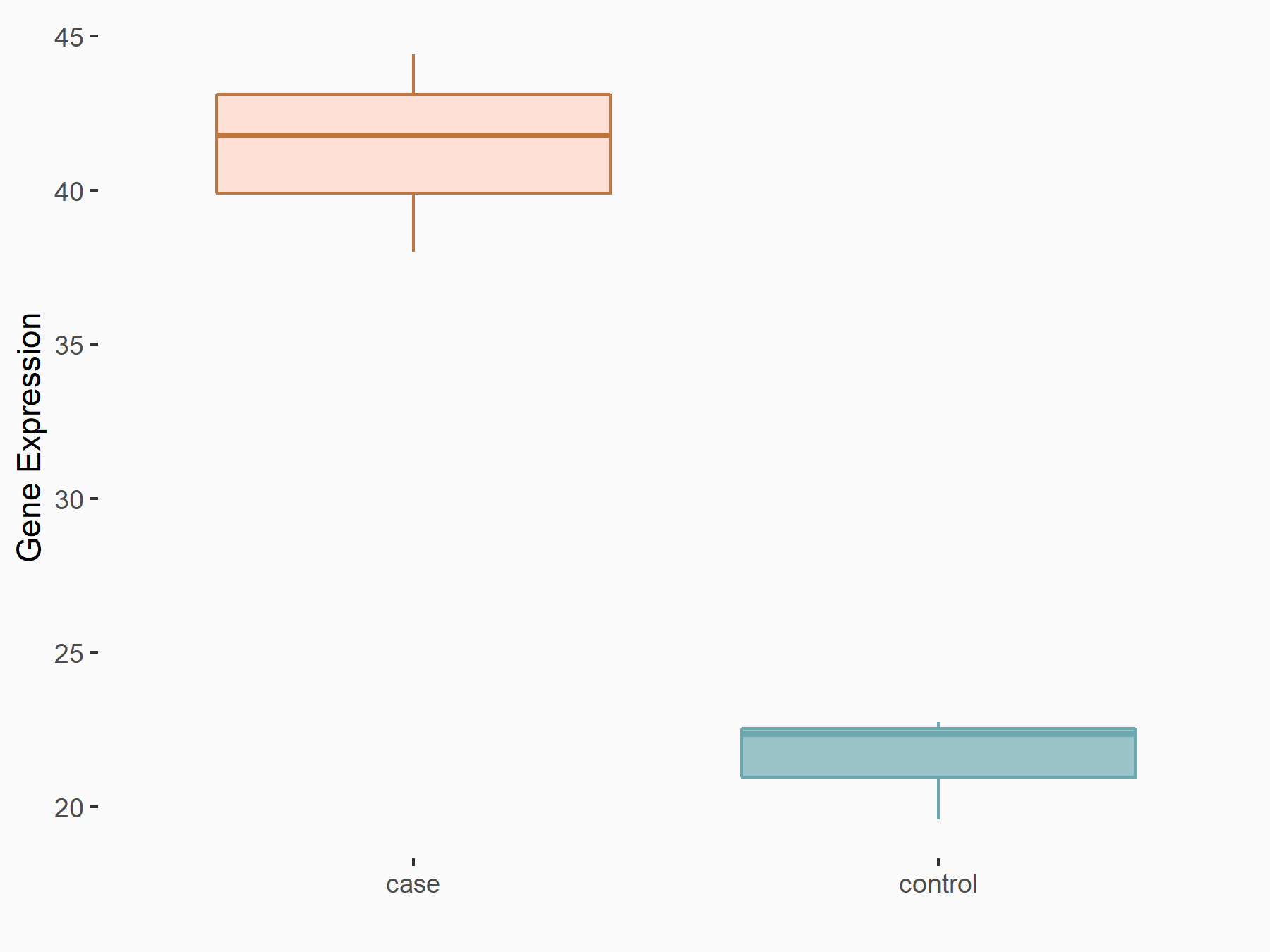m6A Target Gene Information
General Information of the m6A Target Gene (ID: M6ATAR00635)
Full List of m6A Methylation Regulator of This Target Gene and Corresponding Disease/Drug Response(s)
YY1
can be regulated by the following regulator(s), and cause disease/drug response(s). You can browse detail information of regulator(s) or disease/drug response(s).
Browse Regulator
Browse Disease
Methyltransferase-like 3 (METTL3) [WRITER]
| Representative RNA-seq result indicating the expression of this target gene regulated by METTL3 | ||
| Cell Line | Pancreatic islets | Mus musculus |
|
Treatment: Mettl3 knockout mice
Control: Mettl3 flox/flox mice
|
GSE155612 | |
| Regulation |
  |
logFC: 9.11E-01 p-value: 3.29E-04 |
| More Results | Click to View More RNA-seq Results | |
| In total 1 item(s) under this regulator | ||||
| Experiment 1 Reporting the m6A Methylation Regulator of This Target Gene | [1] | |||
| Response Summary | METTL3 affected the growth, apoptosis, and stemness of MM cells through accelerating the stability of Transcriptional repressor protein YY1 (YY1) mRNA and the maturation of primary-miR-27a-3p in vitro and in vivo. | |||
| Target Regulation | Up regulation | |||
| Responsed Disease | Multiple myeloma | ICD-11: 2A83.1 | ||
| Cell Process | Cell apoptosis | |||
| In-vitro Model | U266 (Human multiple myeloma cells) | |||
| RPMI-8226 | Plasma cell myeloma | Homo sapiens | CVCL_0014 | |
| NCI-H929 | Plasma cell myeloma | Homo sapiens | CVCL_1600 | |
| MM1.S | Plasma cell myeloma | Homo sapiens | CVCL_8792 | |
| In-vivo Model | BALB/C nude mice (5 weeks old, weighing 18-22 g) were fed in specific pathogen-free facilities and subcutaneously inoculated with U266 cells (1 × 106). The mice were randomly divided into 3 groups with 6 mice per group, when the tumor was measurable. Then, miR-27a-3p mimic or sh-METTL3 was injected intratumorally at an interval of 4 days a total of 4 times. Tumor volume was measured using a digital caliper every week and calculated using the formula V = 1/2 (width2 × length). | |||
Multiple myeloma [ICD-11: 2A83]
| In total 1 item(s) under this disease | ||||
| Experiment 1 Reporting the m6A-centered Disease Response | [1] | |||
| Response Summary | METTL3 affected the growth, apoptosis, and stemness of MM cells through accelerating the stability of Transcriptional repressor protein YY1 (YY1) mRNA and the maturation of primary-miR-27a-3p in vitro and in vivo. | |||
| Responsed Disease | Multiple myeloma [ICD-11: 2A83.1] | |||
| Target Regulator | Methyltransferase-like 3 (METTL3) | WRITER | ||
| Target Regulation | Up regulation | |||
| Cell Process | Cell apoptosis | |||
| In-vitro Model | U266 (Human multiple myeloma cells) | |||
| RPMI-8226 | Plasma cell myeloma | Homo sapiens | CVCL_0014 | |
| NCI-H929 | Plasma cell myeloma | Homo sapiens | CVCL_1600 | |
| MM1.S | Plasma cell myeloma | Homo sapiens | CVCL_8792 | |
| In-vivo Model | BALB/C nude mice (5 weeks old, weighing 18-22 g) were fed in specific pathogen-free facilities and subcutaneously inoculated with U266 cells (1 × 106). The mice were randomly divided into 3 groups with 6 mice per group, when the tumor was measurable. Then, miR-27a-3p mimic or sh-METTL3 was injected intratumorally at an interval of 4 days a total of 4 times. Tumor volume was measured using a digital caliper every week and calculated using the formula V = 1/2 (width2 × length). | |||